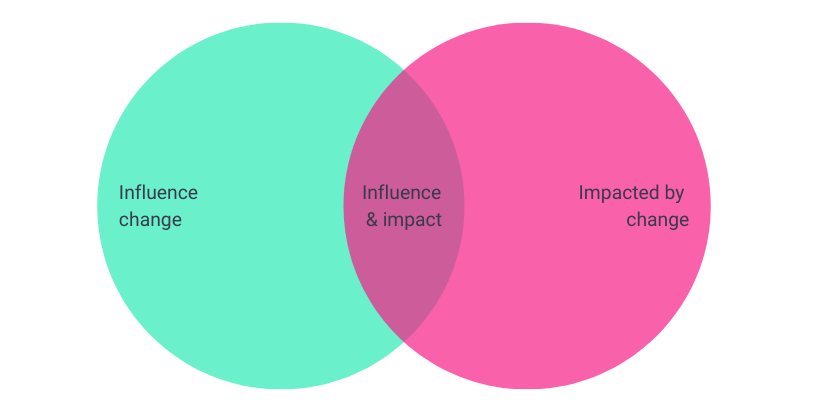
Share this article
How to identify stakeholders and communicate change to them
Does this sound familiar?…. the latest major change within your organisation was kick-started into action in isolation. A few individuals sat down to think it through and detail what the plan should be. It was only when it came to implementing the plan did they realise that others in your organisation weren’t as keen on the changes, or had other opinions on how to roll it out?
Jump to section:
- Why are stakeholders important when considering change?
- How to identify stakeholders when considering change
- Communicating change to stakeholders
- Stakeholder communication plan [Download]
- An alternative way to communicate change to stakeholders
Why are stakeholders important when considering change?
Stakeholders within your organisation are essential when considering change. Communicating effectively, consulting with them and involving them will have a direct impact on how successful any change initiative will be.
How to identify stakeholders when considering change
So, how do you identify who your relevant stakeholders are? Firstly, you need to understand that the stakeholders are groups or individuals who are impacted by and/or influential in the success of the change that needs to be implemented. Put simply, some stakeholders influence your change, and some are impacted by your change – and they are not always the same groups!
Stakeholders

This might seem easy enough but, in our experience, it’s amazing how often groups or individuals are overlooked. In order to make sure you have everyone, create your list by considering the following:
- What change do groups and individuals want to see?
- How will each group or individual measure the success of the change?
- How much influence does a group or individual have?
- How important are they, either due to seniority or expertise?
- How much will their lack of participation affect the change?
- Do they have the ability to stop or undermine the change if they choose to?
- For anyone affected by the change, what will this take away from them?
- Who are the winners and losers if the change is implemented?
Communicating change to stakeholders
Now that you have your list created, it’s time to communicate. And you need to do this well. Don’t just consider what you say but pay careful attention to how you say it and when you say it. Remember, timing is everything.
Things to consider are:
- What communication channels are you going to use? Email, face-to-face? This might be dictated by the proximity and number of those affected.
- How often do you need to communicate?
- Are you going to communicate the whole change to everyone, or do you need to select certain information for different groups or individuals?
- When is the best time to communicate? 9am on Monday morning or 4.30pm on Friday afternoon are probably worth avoiding for obvious reasons.
- How will you get feedback from your communication? How can you encourage dialogue and answering questions as part of your communication campaign?
Stakeholder change communication plan
As each group of stakeholders could be affected differently by the change, this chart will help you to plan how you will communicate with each of your stakeholder groups or individuals. You can download a PDF of this communication plan here.

An alternative way of communicating change to stakeholders
At CLP we understand that one size doesn’t always fit all. There are many change scenarios affecting different companies. But what all have in common is that opening up dialogue, communication and feedback helps change leaders understand what groups or individuals are afraid of, what is motivating them and what they need. Involving these groups and individuals in your change initiatives as early as possible in the process, will make implementing your change much more effective in the long run.
For example, sometimes, when we are coaching a client to work with certain groups or individuals who are resistant to change, we focus on the ‘communication loop’ dynamics. This allows a change dialogue to develop with a natural order that matches the way many people may think about change. It shows appreciation for all the hard work from the past, at the same time as it makes people understand the benefits for engaging with the change. It’s so simple but highly effective. We just wish more change initiatives would kick-start their communication in this way!
Learn more about Change Leadership services or browse our ready-made hybrid courses here.